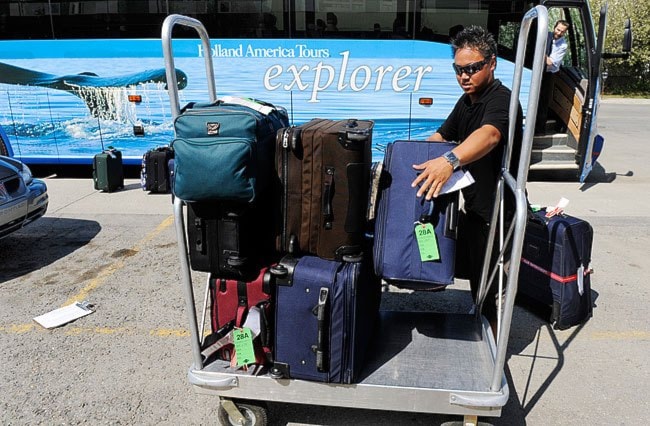More people crossed the border into the Yukon last year than ever before.
The increase in visitors in 2013 from 2012 is nearly equal to the population of Whitehorse, according to the Tourism Department.
A total of 345,510 people drove through the Yukon’s border crossings in private vehicles or on bus tours, up 24,270 from last year.
“2013 saw a record for the number of border crossings into the territory, which is one of the key indicators for health of the tourism industry,” said Pierre Germain, Yukon’s director of tourism.
Overall, other Canadians led the increase, visiting the Yukon 17 per cent more than last year, followed by eight per cent more overseas tourists and seven per cent more visits from our American neighbours.
While border crossings aren’t the only indicator of the strength of the territory’s tourism industry, they are the most reliable because they are measured the same way every year, said Germain.
“Without a doubt, (border crossings are the) most consistent and reliable measure year over year. We’re comparing apples to apples,” Germain said.
But the uptick in rubber-tire traffic coincided with a cooling off of the mining industry, less business travel and a poor showing in retail sales.
Sales through the peak tourism season this year were down 1.7 per cent over last year, while Canada-wide retail went up 2.2 per cent over the same period.
That is worrying to the Whitehorse Chamber of Commerce. Chamber president Rick Karp said that just because more people are driving into the territory doesn’t mean the tourism sector is surging.
“Retail sales have been down consistently and wholesale is down. Hoteliers just a few days ago said that winter rooms are down. Normally we do see a bump in retail sales during the heavy tourism season,” Karp said.
The slow retail numbers could have more to do with the decline in the mining sector, Karp said, but generally a strong tourism sector results in strong retail sales.
“When we see economic activity through mining or tourism, we see increased sales of retail and wholesale. A lot of those numbers can be attributed to the decline in the mining industry. We all hope that will rebound,” Karp said.
“There’s a little bit of a malaise right now in our sector. We are hoping that we’ll see some increased activity, and of course Rendezvous is coming very, very soon.
“Having the Rendezvous street fest coming to Main Street, that will give us a bit of a bump, so that’s good,” Karp said.
Germain said that while retail sales are another indicator that his department looks at, they’re not as reliable as cross-border traffic. “The relation between one indicator and another is difficult to model,” he said.
The previous all-time cross-border record was set in 1999, when the territory was celebrating the 100-year anniversary of the Klondike Gold Rush, Germain said.
“If you compare 2013 to 1999, you see exactly what we’ve been forecasting in the trends for the past decade,” he said.
Contact Jesse Winter at
jessew@yukon-news.com
